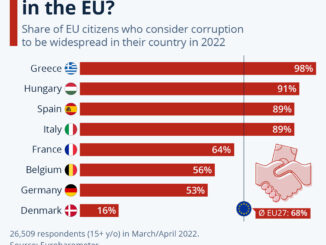
- The U.S., Eurozone, and Chinese manufacturing indexes all showed contraction at year-end.
- Weakness in manufacturing in China, the EU and the U.S. has been weighing on demand for distillates and will likely continue to weigh on global oil demand early in 2024.
- For the time being, U.S. diesel and other distillate inventories are accumulating, although they are still below the five-year average.
Continued weakness in manufacturing activity in the United States, Europe, and China eased demand for diesel and other distillates in the fourth quarter, also easing the diesel markets that were very tight at the beginning of the third quarter.
The U.S., Eurozone, and Chinese manufacturing indexes all showed contraction at year-end as the sector entered 2024 with only slight optimism about regaining momentum this year.
The weak manufacturing activity, which has marked most of 2023 in the United States and Europe, and the uneven Chinese recovery have been weighing on demand for distillates and will likely continue to weigh on global oil demand early in 2024—the period in which oil consumption is typically at its weakest.
The weak manufacturing sector has contributed to the decline in oil prices in recent weeks, despite the OPEC+ cuts and the threat of attacks in the Red Sea, Reuters columnist John Kemp notes.
In the United States, economic activity in the manufacturing sector contracted in December for the 14th consecutive month following a 28-month period of growth, supply executives said in the latest report by the Institute for Supply Management (ISM). The U.S. manufacturing purchasing managers’ index (PMI) rose in December to 47.4%, up by 0.7 percentage point from the 46.7% recorded in November, but still below the 50-point mark separating contraction from growth.
The contraction has been persistent over the past year, but it has been shallow, so strength coming from possible interest rate cuts could result in pick-up in manufacturing activity, boosting demand for distillates later this year.
For the time being, U.S. diesel and other distillate inventories are accumulating, although they are still below the five-year average. In the week ending December 29, 2023, distillate inventories jumped by 10.1 million, which compared with a build of 800,000 barrels for the previous week, according to the latest data from the U.S. Energy Information Administration (EIA). Distillate fuel inventories are now about 6% below the five-year average for this time of year.
The surge in distillate, as well as gasoline, inventories in the last week of 2023 sent oil prices lower at the end of last week and at the start of this week, despite the continued threat of Houthi attacks on vessels in the Red Sea and a force majeure in Libya due to protests at its largest oilfield, the 300,000-barrels-per-day Sharara.
U.S. distillate stocks have increased by a little more than 20 million barrels since the middle of November, although stocks are still trending below the five-year average, ING strategists Warren Patterson and Ewa Manthey said last week, commenting on the EIA inventory report.
“The large product builds were predominantly driven by weaker demand,” they noted, adding that “The large distillates build will do little to help end the broader weakness we have seen in middle distillate cracks in recent months.”
Refined product stocks also rose at the start of 2024 in Europe’s key hub
Amsterdam-Rotterdam-Antwerp (ARA) and in Singapore.
Refining margins for diesel in Northwest Europe ended last year 40% below the levels from the end of 2022, despite the EU ban on seaborne imports of Russian petroleum products that came into effect in February 2023.
Europe has imported more diesel from the Middle East and Asia this year to offset the loss of Russian fuel supply. Import levels were high enough to ease fears of a supply shortage in the first winter without Russian fuels, while an industrial slowdown in Europe weakened demand.
In the Eurozone, manufacturing activity contracted for the 18th month in a row in December, the latest survey compiled by S&P Global showed. In China, the official PMI showed a third consecutive month of manufacturing sector contraction and one that was deeper than expected.
Globally, diesel and other distillate inventories are higher now than they were this time last year, suggesting that the global diesel market has started to ease, in part due to slowing construction and manufacturing activity in the United States and major European economies.
ENB Top News
ENB
Energy Dashboard
ENB Podcast
ENB Substack



